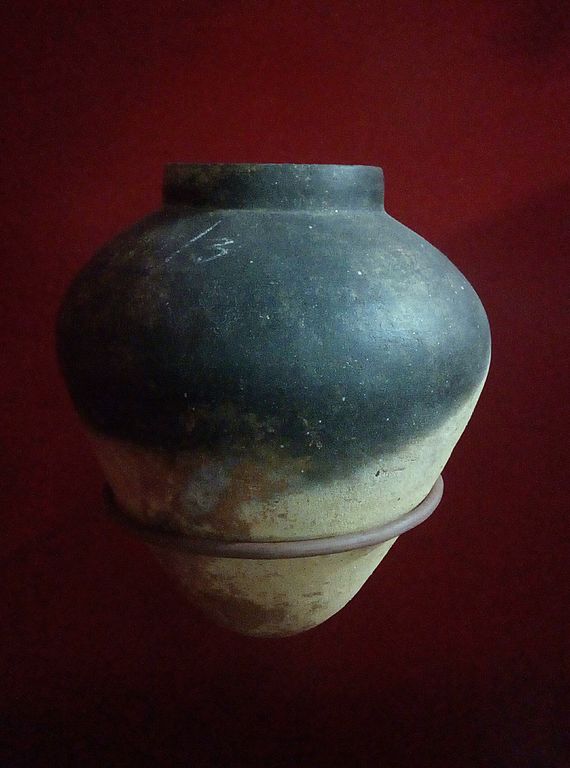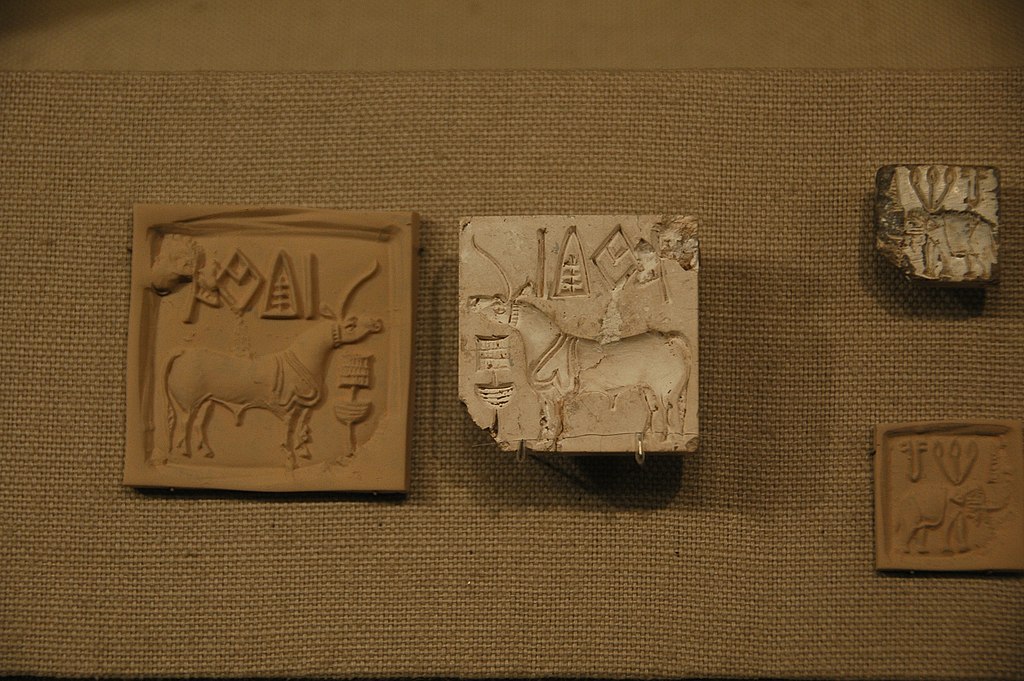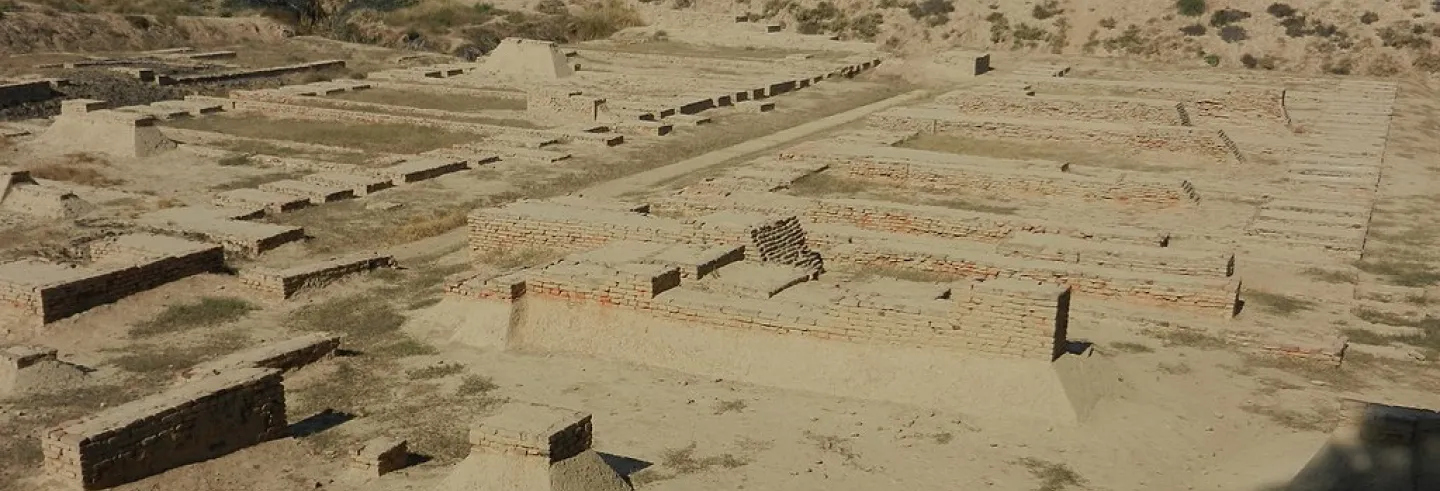Where and how did Indian civilisation begin? What is its status in the 21st century world? Who were the people who originated civilisation in India?
I would not have entered this discourse had the Rashtriya Swayamsevak Sangh (RSS) and Bharatiya Janata Party (BJP) not come to power and imposed their extreme Dwija right-wing nationalist agenda on India and its education system. They would make us believe that Indian civilisation started with the Vedas. All sections of people — Shudras, Dalits, Adivasis, Sikhs, Muslims, Christians, and so on — are forced to accept the Vedic civilisation as India’s originary civilisation. By implication, they create a make-believe theory that the Dwijas alone were the builders of the Indian civilisation.
The earliest Brahmin books — the Vedas — were composed in Sanskrit beginning 1500 BCE after the migration of the Aryans to the Indian subcontinent. But before the Aryans arrived, composed the Vedas, and divided Indian society into four varnas, a very advanced civilisation had already been built on the subcontinent by the Harappans.
The present-day Shudras, Dalits, and Adivasis are the real inheritors of that civilisation — not the Dwijas. This is the reason the Dwijas overplay the Vedic civilisation and either ignore or undermine the Harappan civilisation.
The book and the spade
If the Vedic civilisation can be symbolised by the books it produced, the Harappan civilisation could be symbolised by the spade. The Harappan urban civilisation was not only built using spades but also grew through revolutionising agriculture with the help of the plough — an advanced form of the spade. The Harappan spade civilisation has a life of 1,000 years of pre-book Vedic civilisation in India. Therefore, the spade, rather than the book, should be treated as the original symbol of Indian civilisation.
A book is not an instrument of civilisation building. On the other hand, the spade is an instrument with which civilisation is built. A book can only tell us about a particular aspect of the civilisation that a spade as an instrument builds from time to time. In the process of the growth of human civilisation, the spade continues to play a central role in the production and development of resources. A spade is not a messenger of a particular civilisation but a key instrument with which civilisation-building work is done. It represents the genealogy of technology in each stage of human civilisation.
The Hindutva school does not want to learn and teach about the knowledge of production, as the Brahminical forces are against it. They want to include the history of Shudras, Dalits and Adivasis as part of Brahminic knowledge.
A spade may change its shape. Once it was used by a human hand, and now it might be mechanised. But a spade remains a spade. While the book plays a critical role in improving and spreading civilisation in vast areas, even without a book a civilisation can survive and its culture of production can spread from region to region.
The Brahminical ideological heritage will not allow the spade civilisation to be part of history. The Hindutva school does not want to learn and teach about the knowledge of production, as the Brahminical forces are against it. They want to include the history of Shudras, Dalits and Adivasis as part of Brahminical knowledge.
This way of reading of Indian history does great injustice to the spade civilisation built by Shudras, Dalits and Adivasis before the Aryan arrival. The Vedas, Upanishads, Ramayana, and Mahabharata do not reflect any aspect of the spade civilisation that has its roots in the Harappan civilisation. The Vedic culture did not teach anything new in the production and construction realms, but rather, pushed us backwards by constructing a myth that production is pollution. It did not develop any urban centres like those of Harappa. Indeed, the next urban rise in the subcontinent was only around 600 BCE, with the Magadhans, around the same time as the development of the Shramanic Buddhist civilisation.
Every generation has to know of the Harappan roots of India’s production and construction knowledge. For that is the foundation of our civilisation.
Harappans and the pre-Aryan economy
In Early Indians—The Story of Our Ancestors and Where We Came From, Tony Joseph writes: "By the time the last migrants, the Aryans, arrived sometime after 2000 BCE, Indians in the subcontinent were already one of the largest modern human populations on earth (if not the largest); had already led an agricultural revolution and then an urban revolution leading up to the creation of the largest civilisation of its time; and were spearheading an agricultural transition in almost every region, in the north, south, east and west. It would be accurate to say that the very foundation of India as we know it was laid during the period of the Harappan civilisation.”
The Harappan civilisation was a continuation of the hunting, fishing, pastoral, and agricultural economy that the pre-Harappans built. The advances in agriculture were accompanied by advanced human cultural relations and Harappa emerged as one of the earliest urban civilisations in the world. This civilisation was built with the skills, labour, and instruments that formed the earliest forms of technology on the Indian subcontinent.The making of bricks, pots, and bronze tools, or the crafting of wood required proper planning by enthusiastic people, curious to innovate things with available materials like earth, wood, ores, and so on. The construction of houses and urban centres requires a range of technical tasks that need to be performed by a large number of people, who made significant contributions in building that civilisation.

Building the Harappa and other cities of the Indus Valley Civilisation, like Mohenjodaro and Dholavira, would have been possible only when surplus food generated by collective production activity was available for those focused on improving technology. For these tasks — house construction, pot making, vessel making — are done by specialised artisans who practice their occupational tasks full time. Brick and pot makers, carpenters, ironsmiths and goldsmiths, or barbers are not involved in the direct food production, animal economy, or fishing. Farmers produce food for them, in return for implements like spades, ploughs, pots, cloth, and iron and wood instruments.
Since artisans depended on others in society for surplus food, there would have been a collective engagement with the production and distribution of commodities among agriculturists and artisans. As the Harappans went about building their civilisation, they would have been a collective social force, with the division of labour similar to that seen in present-day tribal and plain agrarian collective production processes.
Is not the Shudra mind a library?
The production and construction knowledge — of the Harappan vintage or of the present — is not considered as legitimate knowledge by Brahminical pundits.
In a recent article, Devdutt Patnaik, a writer on Brahmanical mythology, claims that Brahmins “were men who memorised and transmitted Vedic chants and Vedic rituals. Killing them was akin to destroying a library as writing was unknown in the Vedic times, and all chants were passed down by word-of-mouth. So, the concept of Brahma-hatya-paap, the grave sin of killing a Brahmin, gained popularity.”
Were the minds of Shudras and Dalits not human libraries which played a very fundamental role for the survival of human communities?
If Brahmins who memorised the Vedas were human libraries, what about those people who kept the whole production and construction knowledge in their memories and passed it on to several generations? Were the minds of Shudras, Dalits, or Adivasis not human libraries which played a very fundamental role for the survival of human communities? Historically it was these communities who grew food and engaged in production-related technologies. Few Dwijas — whether they be Brahmin, Banias, Ksatriyas, Kayastha, or Khatri — undertake these tasks even now.
Skilled workers continue to be part of modern Shudra, Dalit, or Adivasi communities. Their knowledge is not of myths. Artisans are both theoreticians and practitioners, with enormous skill and expertise. Experimentation is part of their profession. It is more real than the Brahmanical book-based based knowledge, which is transmitted by seniors to juniors merely by making them memorise mantras. This teaching of Vedic knowledge needs verification through re-recitation, but it cannot be verified whether that teaching has really produced concrete results in form of punyam — sacredness.
On the other hand, productive and constructive knowledge needs to be taught at two levels to produce concrete results. First, it needs to be explained theoretically and has to be memorised by the younger generation. At the second stage, it needs to be tested in the field. A senior pot maker first teaches a younger person the principles of how to make a pot, which then needs to be verified in practice — whether that method really produces a pot. Agrarian production needs a concrete study of the relationship between soil and seed in each geographical context. It does not give practical results merely from memorising the method of cultivation. That knowledge has to be tested in the praxis.

The Brahmanical idea of parampara has nothing to do with this knowledge. In fact, it is against this productive knowledge. Brahmanical writers never bothered to understand the importance of this knowledge. Hindutva Brahminism does not want that this knowledge to be brought into books and taught to young Indians.
Further, Brahmanical knowledge is not taught to all those who want to learn, whereas anybody could learn pot making or carpentry or animal grazing or tilling. A Brahmin is free to go to a Shudra to learn how to produce food. But they do not want to learn that knowledge or do the work of producing, as it is seen as polluting. This kind of spirituality is not a religion but superstition, and condems India as a nation to be superstitious. No Brahmin realised that this anti-production disease weakened and damaged the nation and its people for millennia.
Sanskrit as anti-spade
Spade civilisations constructed spiritual systems without undermining the animal economy and agriculture. They are organically linked to the language of communication. They produce texts that do not separate spade and book as antagonistic civilisational entities, as did the Brahminical culture. It is very possible that ritual work in the Harappan civilisation was carried out by almost everyone in the community, as they do in Indian villages even in our times, with no separate group whole time on that job. The present village practice of productive work and spiritual operations carried out by the same people seem to be a legacy of pre-Aryan Harappans.
In contrast, Brahmins became full time ritual specialists, keeping themselves out of production and construction work. This gave birth to an anti-productionist spiritual agenda that kept the nation stagnant. It was not an accident that the majority of the Indian population, the Shudras, Dalits and Adivasis, were kept away from reading and writing and exchanging ideas. Sanskrit was denied to the tillers of the land for their day-to-day productive life. It was a rishi’s language but not a language for krishi. The prohibition on the usage of Sanskrit was enforced by violent means: as evidenced by historical Shudra and Dalit productive life and by Brahminical texts like Manu’s Dharmashastra. Even into the early 20th century, no Shudra or Dalit could learn Sanskrit in gurukulas.
Brahminism, by separating the spade and the book, made Sanskrit a non-accessible language and stopped the growth of production and distribution of knowledge processes.
In this system of control and management not only Shudras, Dalits, and Adivasis, but India itself suffered a great civilisational loss. Brahminism, by separating the spade and the book, made Sanskrit a non-accessible language and stopped the growth of production and distribution of knowledge processes. Shudras, Dalits, and Adivasis in the past did not have a common, pan-Indian link language to exchange their ideas and knowledge. Even after they got literate in their local languages, their knowledge could not be communicated to people outside their linguistic zones. This restricted the spade civilisation’s mobility and innovations in knowledge and technology. Many innovations and technologies died out because their form, content and use value could not be transmitted beyond their locations through a common language.
This is the contribution of the Brahminical parampara, which the RSS and BJP wants to teach all young Indians.
Writing about productive minds
After Vedic Brahminism emerged, all the spade civilisation builders were declared as the fourth varna: the Shudras. The Shudra masses came to believe that Brahmins were God-sent people to rule over them spiritually. By consenting to be spiritual slaves and labourers, they handed over economic, social, and political power to the Brahmin. Even when they occupied royal positions, Shudra kings were controlled by Brahmin priests, prime ministers and intellectuals. They imbibed the Brahmanical superstition against Shudras, assumed Kshatriya status, and sought ritual acceptance from Brahmins. The famous case of Chhatrapati Shivaji is an example. This fear psychosis played havoc with the Shudra civilisation. Shudra kings were alienated from the rest of the Shudra masses and were only agents of Brahminism.
What the spade meant as a civilisational heritage was never written into books. That greater civilisational stream never got talked about in historical terms. Few Dwija scholars in the post Independent India felt the need to research the productive knowledge of the spade civilisation. The Shudra, Dalit, and Adivasi mind-library in its multi-dimensionality has not yet been fully recorded in writing. India as a nation lags because their productive thinking and application processes have not been engaged with.
Critical engagement with knowledge is possible only when productive minds are written about and analysed. Writing on Brahmin rishis and Ksatriya kings, without any relationship to the constant struggle with nature for producing goods and commodities, does not enlarge the social knowledge base. What constructs a civilisation is not books, but the collective labour power of people.
The RSS has become a modern instrument of classical Brahminism to keep Shudras, Dalits, and Adivasis under its grip, through spiritual, linguistic and also political power mechanisms.
The Shudra question does not just deal with historical oppression as an issue of human rights. The Shudra question is more about discovering unwritten production knowledge, skills, technologies, innovations, successes and failures in the process of human engagement with nature itself. The Shudra, Dalit, and Adivasi mind still remains unwritten because the Brahmanical mind thought that it was not worth writing. Now that the Shudras, Dalits, and Adivasis come to realise their great loss, the RSS and BJP do not want that knowledge to get into books for schools and colleges.
The RSS has become a modern instrument of classical Brahminism to keep the Shudras, Dalits, and Adivasis under its grip through spiritual, linguistic and also political power mechanisms. From power positions in Delhi both the RSS and BJP want to impose an educational syllabus on Indian civilisation that draws only from Vedic, Puranic, and epic sources, in which Shudra, Dalit, and Adivasi productive, creative and human centred life activities are absent. They do not want to allow future generations to know about the spade civilisation, but want only their book civilisation to be presented as Indian civilisation.
Shudras, Dalits and Adivasis should reject such one dimensional understanding of India, past and present. Unfortunately, some Dalit writers aligned with Hindutva nationalism have joined the stream of Vedic nationalism. In August last year the RSS ideologue and leader Dattatreya Hosabale — who comes from a Kannada Brahmin family background — launched Makers of Modern Dalit History, a book written by Sudarshan Ramabadran and Guru Prakash Paswan. The book claims that Veda Vyas, the composer of the Mahabharata, and Valmiki, the composer of Ramayana, were Dalits. The authors came to this conclusion by accepting the Brahmin view of history and civilisation.
How can Dalit writers construct Brahmins and Kshatriyas as superior people, without giving any dignified place for their parental community which was involved in various productive activities? How do these Dalit writers believe in books which do not discuss the sources of human survival but see labour as mean? How do Dalit writers believe that their own self is worthless? They might be great writers but they could in no way be called Dalit. This is ‘Dalit history’ coming from Dalits who have power positions at Delhi and Nagpur. They do not know that history does not change because they write from power.
Brahminical writers argue that Brahmanical heritage is the real civilisation and culture of India. But without production no civilisation or culture could develop. Even as the Brahmanical texts were being composed, the production and distribution of food and other production resources continued. If that was to cease life would have come to an end. Books would not have saved the nation if production and distribution halted.
It is the continued Shudra and Dalit culture of production and construction in the face of Dwija anti-production that brought India into the 21st century. The RSS’ attempt to push its favoured books as the only real nationalist syllabus, leaving out the whole history of knowledge of production and construction, will only push the nation backwards.









